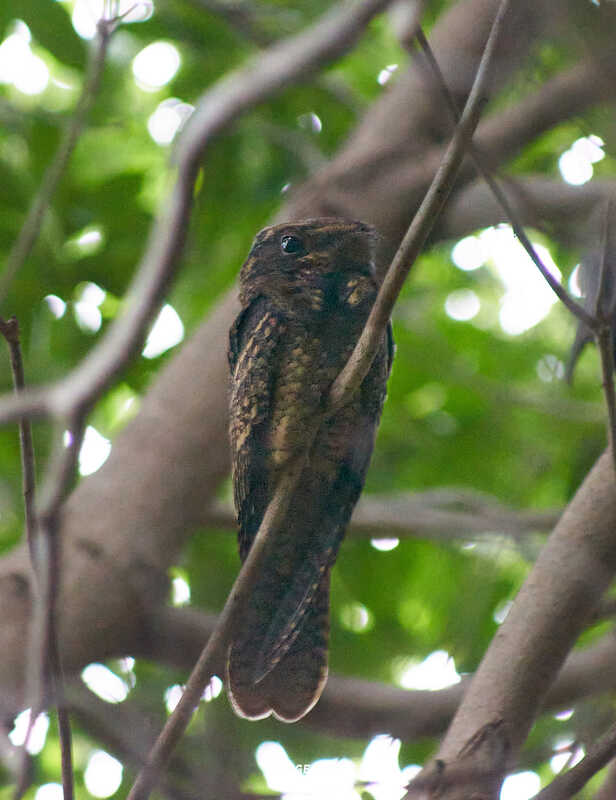Chuck-will's-widow breed in the south-east of North America down to Florida. During winter they move south to the Caribbean, central America and as far as Venezuela. They are the largest in the family in North America and eat mainly flying insects like moths, dragonflies and beetles including June beetles, scarabs, long-horn beetles, and click beetles. Very occasionally, they have been seen eating birds such as Hooded, Palm, Yellow, and Cape May Warblers, Common Yellow-throat, Swamp Sparrow, Carolina Wren, Cuban Emerald as well as bats (All About Birds)!
|
There are five species of Goatsuckers (Caprimulgidae) that have occurred in Cuba. I have blogged about the two species that breed on the island which are the Cuban Nightjar and the Antillean Nighthawk. In addition to those are Common Nighthawk which is a transient in spring and autumn on its way to winter in South America, the Eastern Whip-poor-will which has only occurred once or twice as a vagrant, and Chuck-will's-widow which occurs as both a transient and a winter resident. Roberto Jovel took some wonderful photos of one near Baracoa last December here and the picture above was taken by Jorge Uría. Thank you Jorge.
Chuck-will's-widow breed in the south-east of North America down to Florida. During winter they move south to the Caribbean, central America and as far as Venezuela. They are the largest in the family in North America and eat mainly flying insects like moths, dragonflies and beetles including June beetles, scarabs, long-horn beetles, and click beetles. Very occasionally, they have been seen eating birds such as Hooded, Palm, Yellow, and Cape May Warblers, Common Yellow-throat, Swamp Sparrow, Carolina Wren, Cuban Emerald as well as bats (All About Birds)!
0 Comments
Leave a Reply. |
Welcome to our Blog
Here we will post interesting news about what we and others have seen in Cuba. Archives
July 2024
Categories |

 RSS Feed
RSS Feed